Physical Address
304 North Cardinal St.
Dorchester Center, MA 02124
Acanthomas are benign cutaneous neoplasms characterized by an expansion of the epidermis. The acanthoma may be composed of clones of cells that displace or compress the preexisting epidermis. In contrast to the reactive acanthosis seen in inflammatory disorders, the rete ridge pattern is commonly ablated by the neoplastic tissue of an acanthoma.
Seborrheic keratoses are acanthomas composed of small polygonal keratinocytes about the size of acrosyringeal keratinocytes (the cells that make up the intraepidermal portion of the eccrine duct). The cells are typically smaller than the cells of the surrounding epidermis, and they are commonly pigmented. Architectural subtypes of seborrheic keratoses include acanthotic, hyperkeratotic, reticulated, and clonal. Any of these subtypes may be pigmented, irritated (spindling of cells and squamous eddy formation), or inflamed (usually lymphoid inflammation). Melanoacanthoma is a distinct subtype of seborrheic keratosis composed of small keratinocytes and dendritic melanocytes.
Seborrheic keratoses produce a characteristic loose lamellar “shredded-wheat” stratum corneum. Exceptions include irritated or inflamed seborrheic keratosis. Instead of the characteristic loose lamellar horn, irritated or inflamed seborrheic keratoses produce a compact, brightly eosinophilic, parakeratotic stratum corneum. Adjacent unaffected areas of the seborrheic keratosis still produce the characteristic loose lamellar stratum corneum, and it is common to see remnants of loose stratum corneum above areas of compact stratum corneum. Melanoacanthomas produce a deeply eosinophilic, compact, parakeratotic stratum corneum, even when they are not irritated or inflamed.
Seborrheic keratoses may express BCL-2, a marker associated with resistance to programmed cell death (apoptosis). Activating point mutations in the gene encoding fibroblast growth factor receptor 3, a tyrosine kinase receptor, are also common in seborrheic keratoses.
Broad sheets of small polygonal keratinocytes with intervening horn cysts
Loose lamellar “shredded-wheat” or “onion-skin” keratin
Commonly pigmented
Acanthotic seborrheic keratoses are composed of broad sheets of cells with intervening horn cysts or pseudohorn cysts. Horn cysts are completely encased within the acanthoma, whereas pseudohorn cysts open to the surface. Like other seborrheic keratoses, they may become irritated or inflamed.
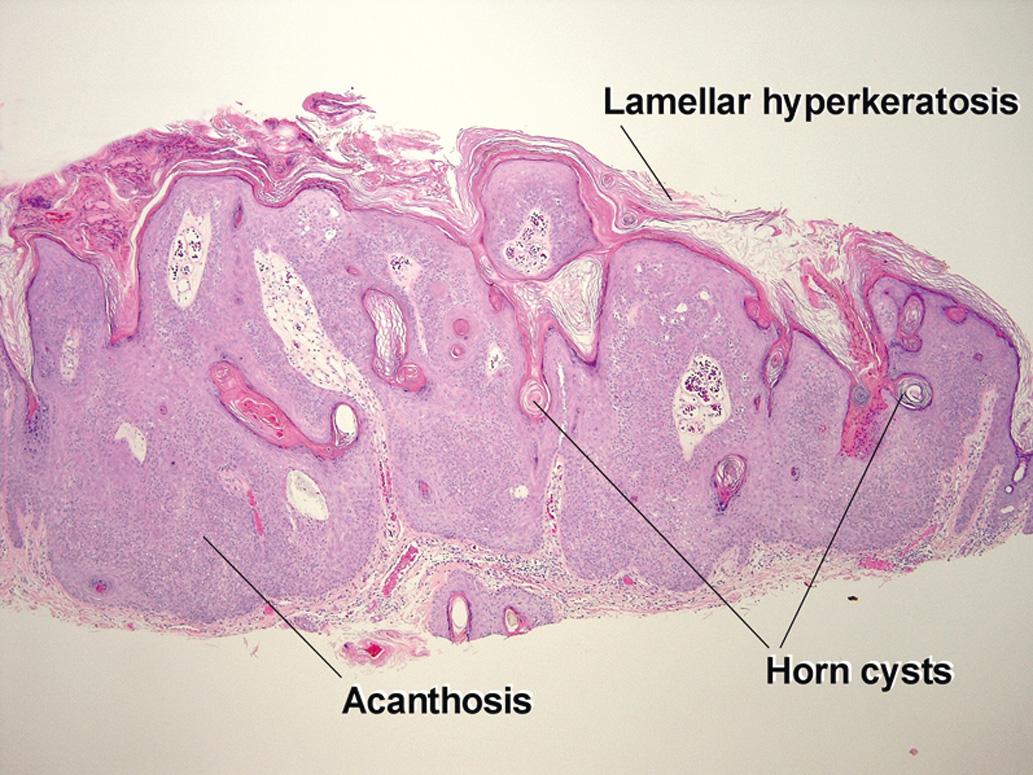
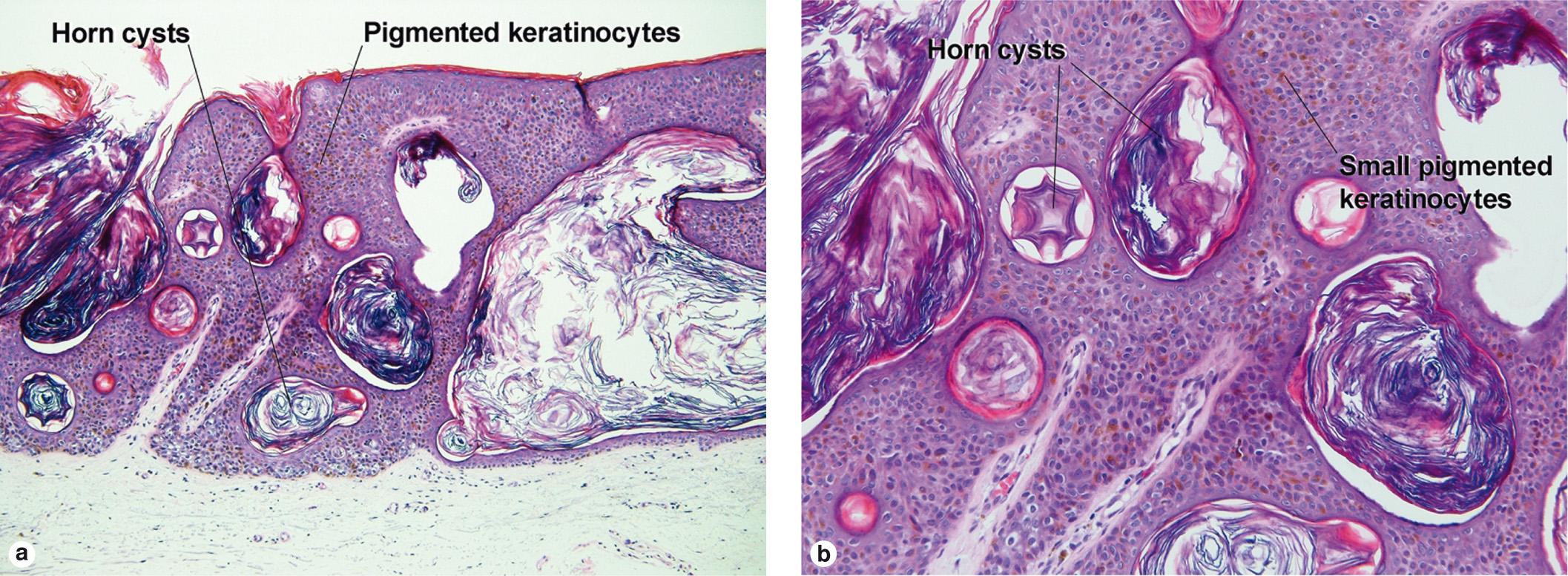
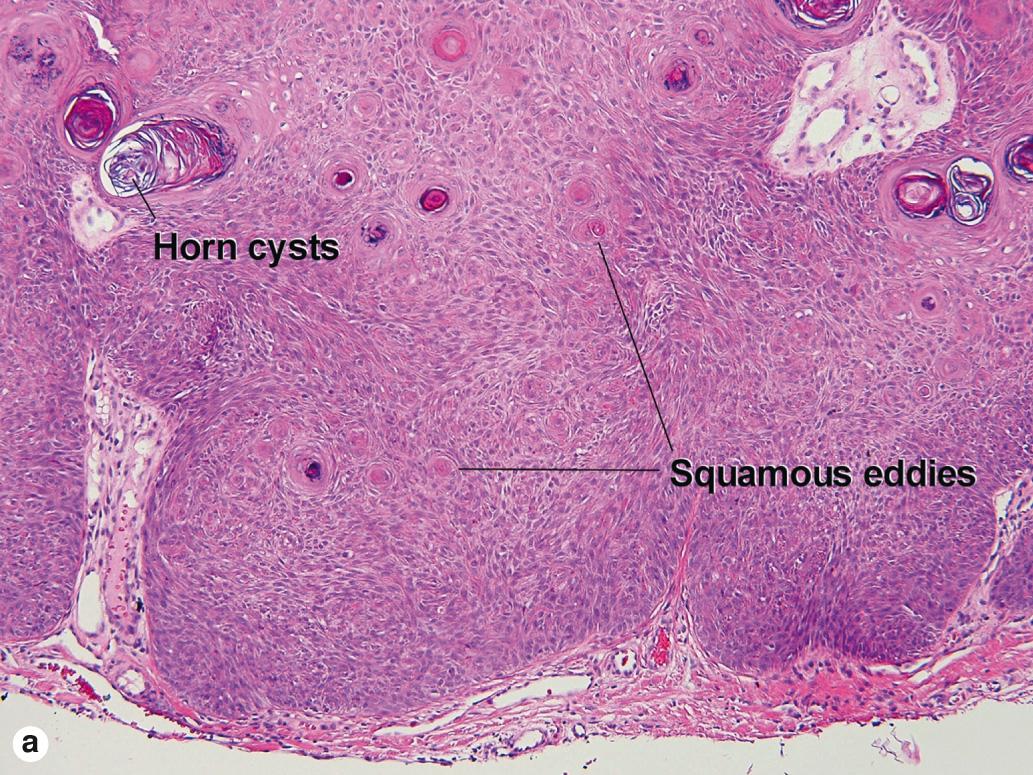
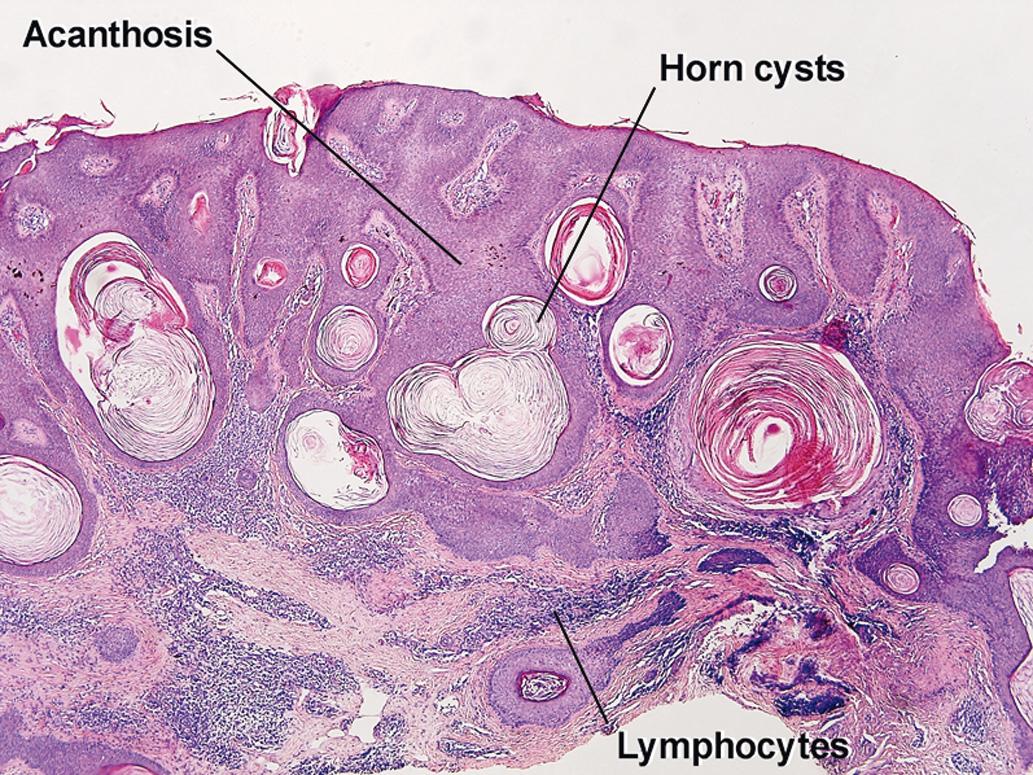
Tall stacks of loose lamellar “shredded-wheat” keratin
Papillomatosis: hills and dales that may produce a “church-spire” appearance
The tall, stacked stratum corneum is typically much thicker than the epidermis. As in other forms of seborrheic keratosis, the keratin has a loose lamellar “shredded-wheat” appearance unless the lesion has become irritated or inflamed. Papillomatosis is characteristic, but variable in degree. Horn cysts are inconspicuous or absent.
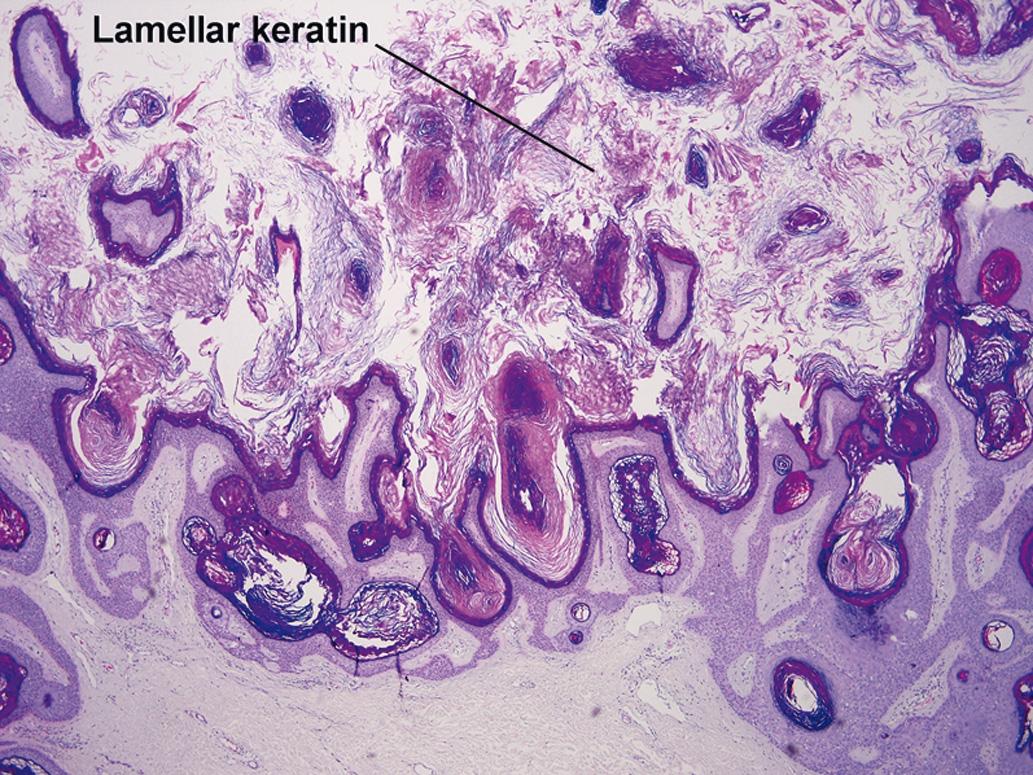
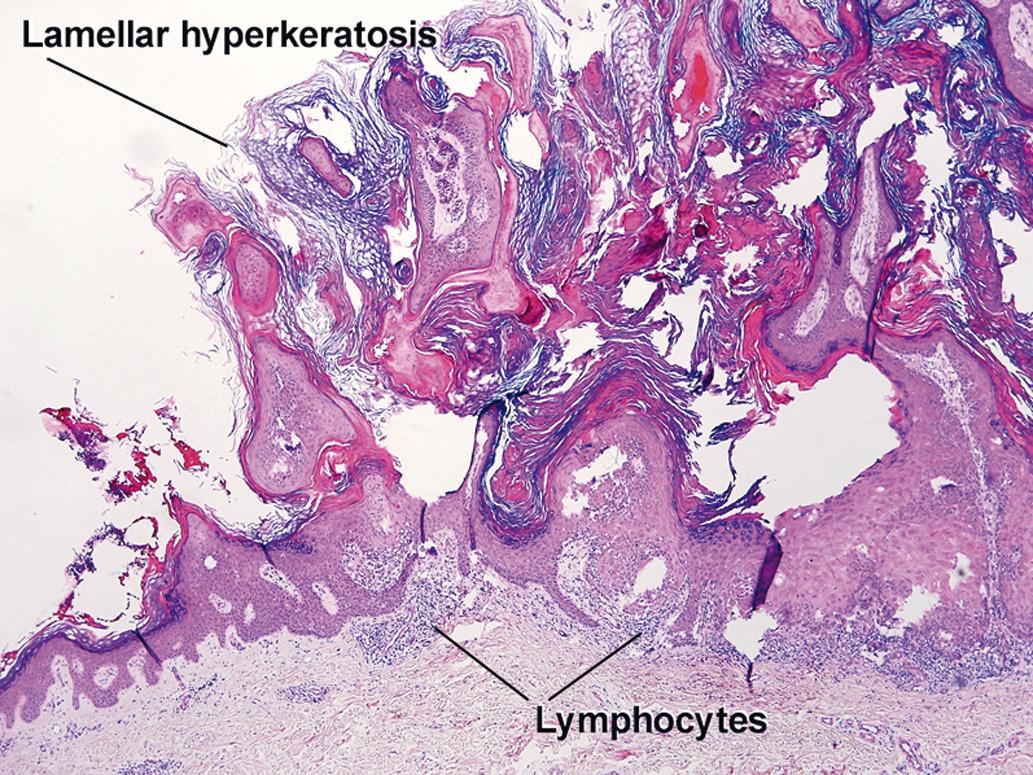
Thin, pigmented, interlacing, downward extensions of the epidermis
Reticular (lacelike) configuration of epidermis interspersed with horn cysts
The lesion is composed of thin, interlacing strands of epidermis, typically two cells thick. These strands are generally pigmented.
Shares thin, pigmented, interlacing extension of the epidermis
These are shorter and more bulbous than those in reticulated seborrheic keratosis
Lacks horn cysts
Clonal islands of small keratinocytes within the epidermis
Bland uniform nuclei
Absence of duct differentiation within clonal nests
Clonal seborrheic keratosis is characterized by islands of small keratinocytes with uniform bland nuclei. The nests are embedded within the epidermis. Sometimes, the nests are large enough that the normal epidermis is reduced to thin strands separating the large nests. Horn cysts are usually absent. The nests may demonstrate pigment. There may be squamous eddies (irritated seborrheic keratosis), lymphocytes (inflamed seborrheic keratosis), or both. In contrast to Bowen disease, the cells are uniform and atypia is absent. In contrast to hidroacanthoma simplex, no ducts are present within the clones.
Clonal islands of small keratinocytes similar in appearance to those of clonal seborrheic keratosis
Ducts present focally within the clonal islands
Bowen’s disease
Clonal islands of atypical keratinocytes within the epidermis
Cells may be anaplastic or glassy and eosinophilic
Buckshot scatter of cells may be present focally
Apoptotic keratinocytes commonly scattered within nests
Overlying stratum corneum becomes compact and parakeratotic where clones touch the surface
More typical Bowen disease may be present in the adjacent skin
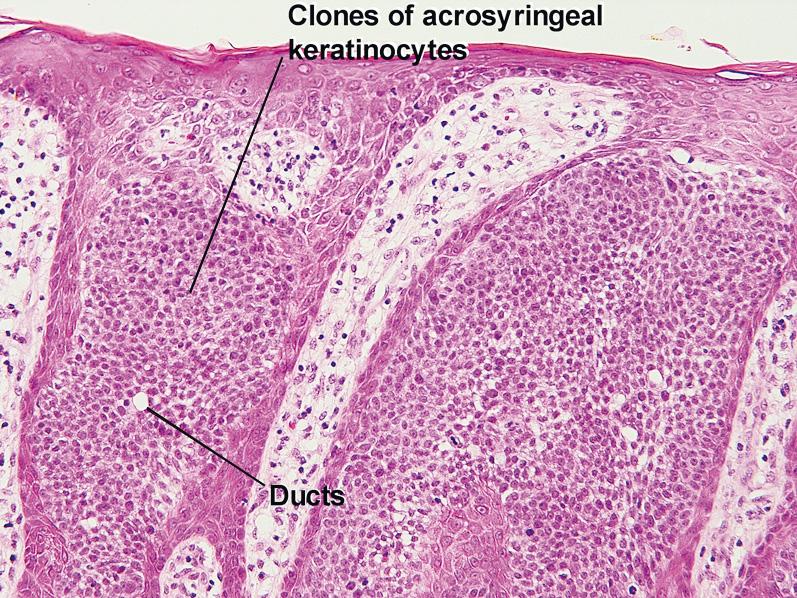
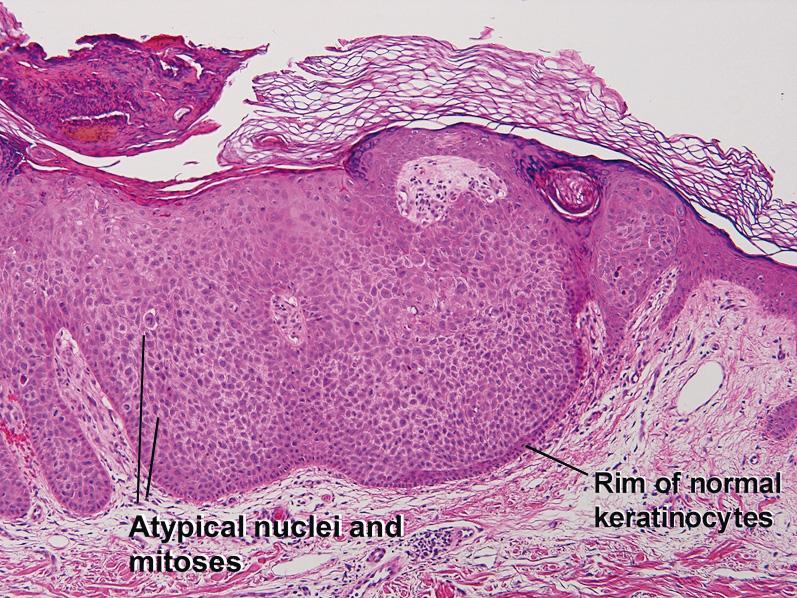
Pigment within keratinocytes
May be acanthotic, hyperkeratotic, reticulated, or clonal
When clonal, the pigment is restricted to the clonal islands
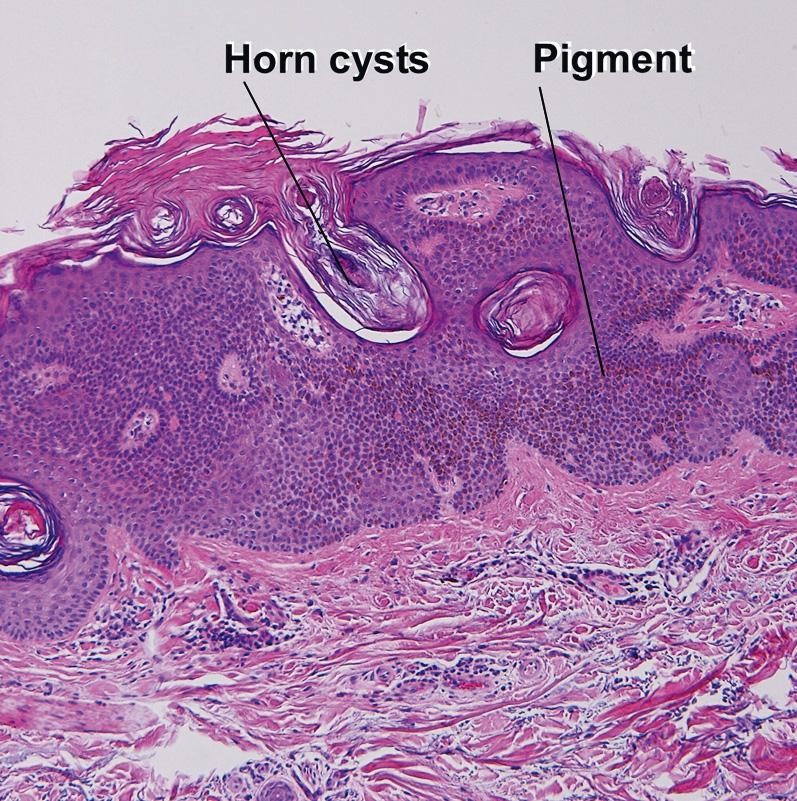
Squamous eddies
Spindled keratinocytes
Horn cysts common
Keratin commonly becomes compact, eosinophilic, and parakeratotic
Keratin often retains a loose lamellar pattern in some areas
Irritated seborrheic keratosis is characterized by the formation of squamous eddies within the epidermis and the presence of spindled keratinocytes. Some areas of the tumor typically still produce a loose lamellar “shredded-wheat” pattern of keratin, and horn cysts composed of loose lamellar keratin are often present. In areas, the keratin becomes compact, eosinophilic, and parakeratotic. A zone of loose lamellar keratin may be seen above the dense eosinophilic keratin. This was produced before the lesion became irritated. It has since been pushed upward.
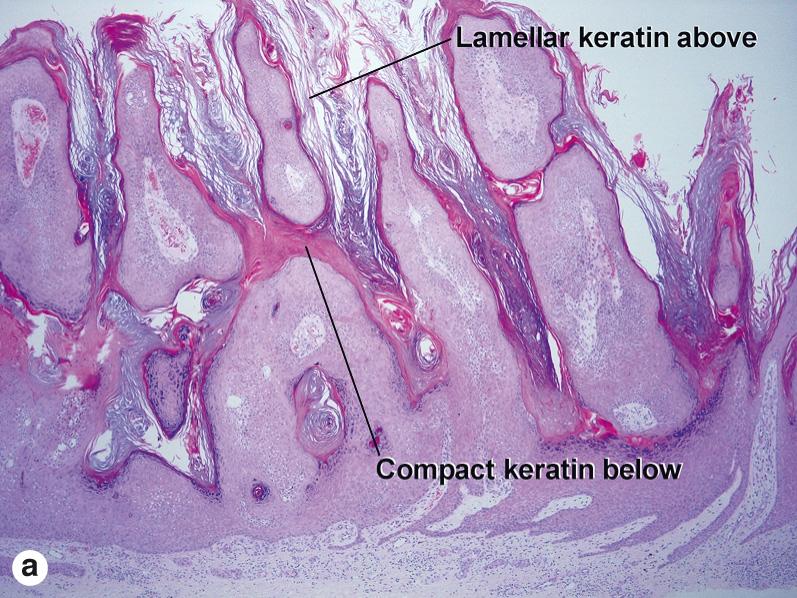
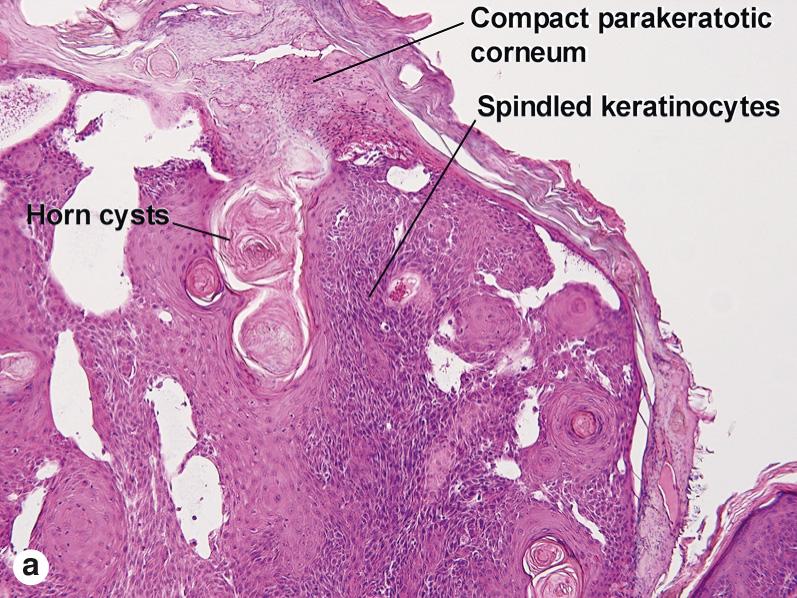
Lymphocytes and spongiosis
In areas, the stratum corneum becomes compact, eosinophilic, and parakeratotic
Loose lamellar keratin is commonly retained in other areas
Horn cysts are common
Lichenoid interface dermatitis may be present
An overlying crust may be present
Inflamed seborrheic keratosis is characterized by lymphocytes and spongiosis within the epidermis or the presence of lichenoid interface dermatitis. Some areas of the tumor typically still produce a loose lamellar “shredded-wheat” pattern of keratin, and horn cysts composed of loose lamellar keratin are often present. As in irritated seborrheic keratoses, a zone of loose lamellar keratin may sometimes be seen above a zone of dense eosinophilic keratin. When clonal, the spongiosis and lymphoid infiltrate are typically restricted to the clonal islands.
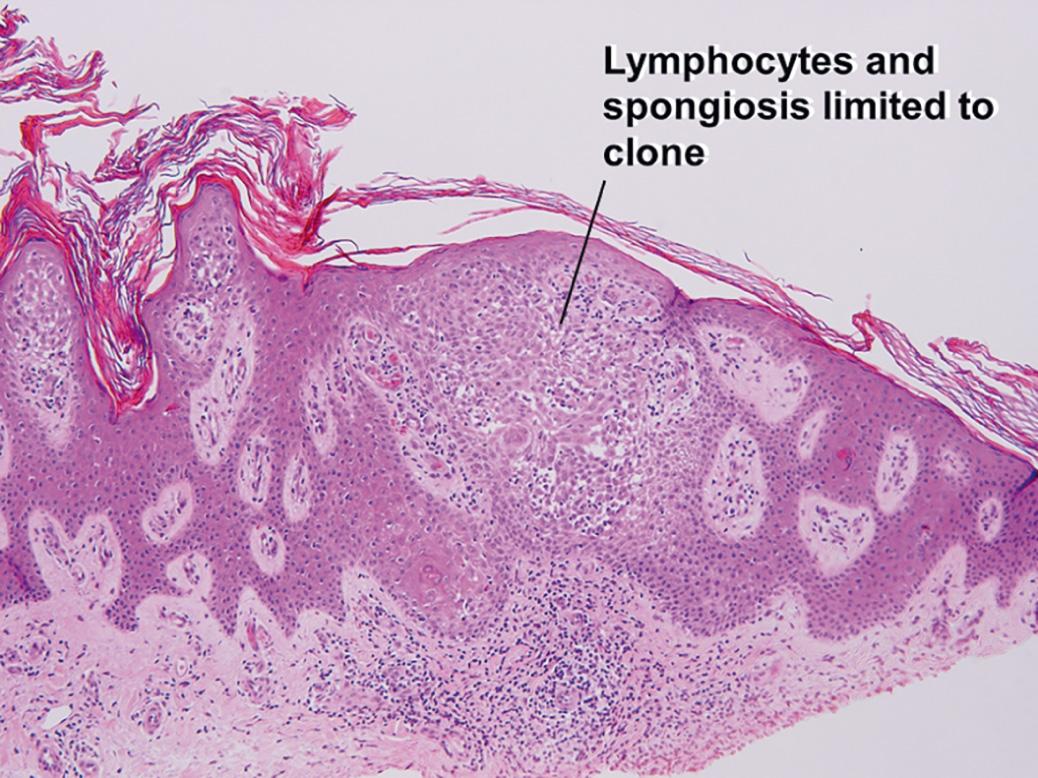
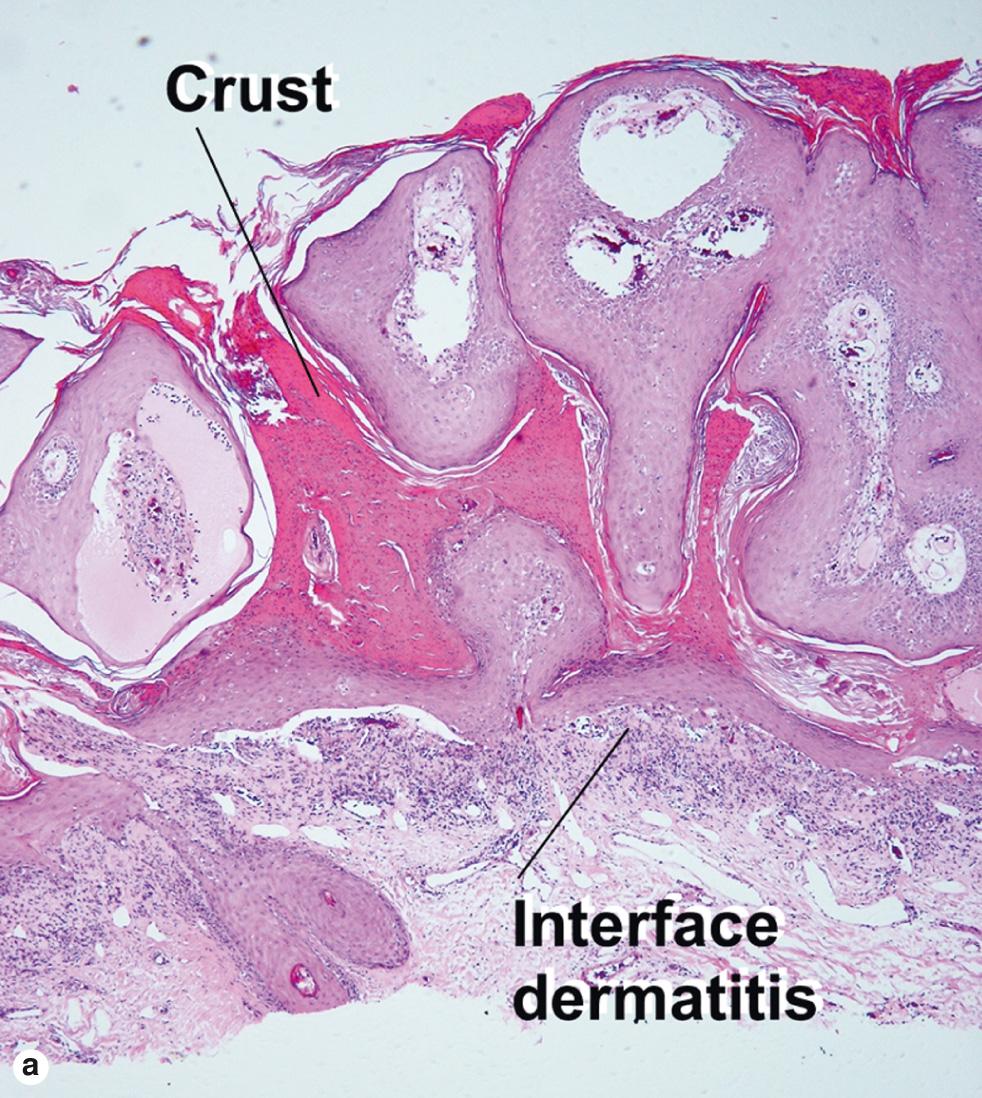
Acanthoma composed of both small keratinocytes and pigmented dendritic melanocytes
Most pigment is within dendrites
Overlying stratum corneum is almost always compact eosinophilic and parakeratotic
Cutaneous melanoacanthomas are a type of seborrheic keratosis, composed of both small cuboidal keratinocytes and pigmented dendritic melanocytes. Most melanin pigment is contained within the melanocytic dendrites, with little visible pigment within the keratinocytes. Unlike most seborrheic keratoses, horn cysts and loose lamellar horn are typically absent. Instead, the overlying stratum corneum is almost always compact, eosinophilic, and parakeratotic. Cutaneous melanoacanthomas may be clonal. Oral melanoacanthomas are reactive proliferations unrelated to seborrheic keratosis.
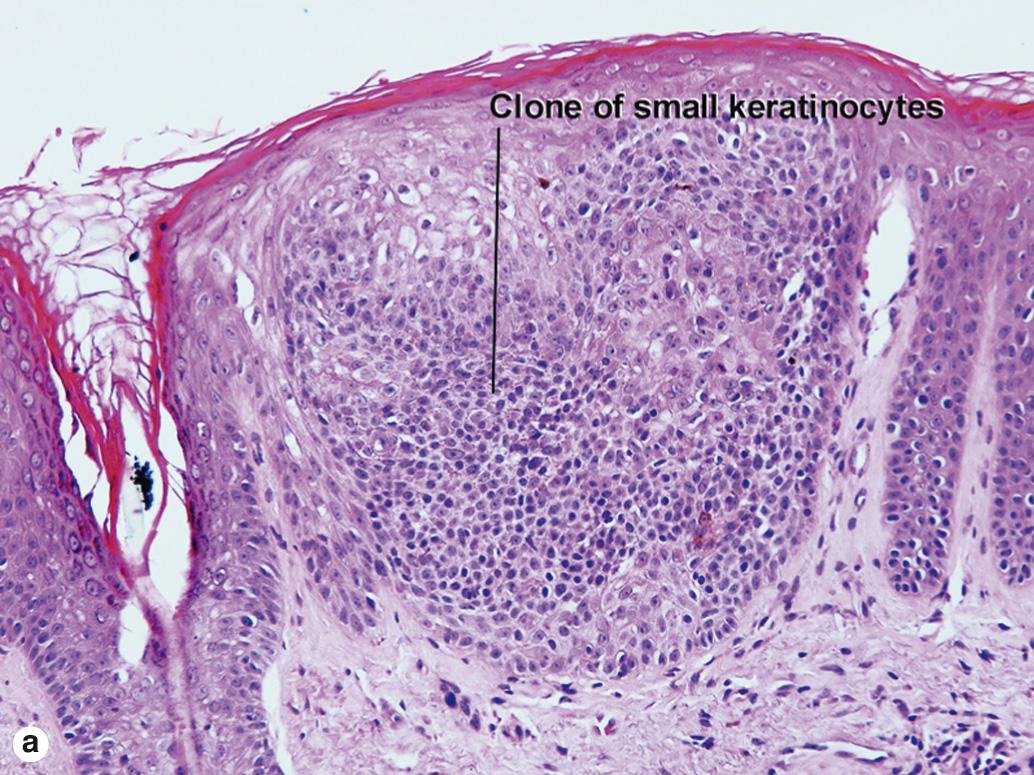
Become a Clinical Tree membership for Full access and enjoy Unlimited articles
If you are a member. Log in here